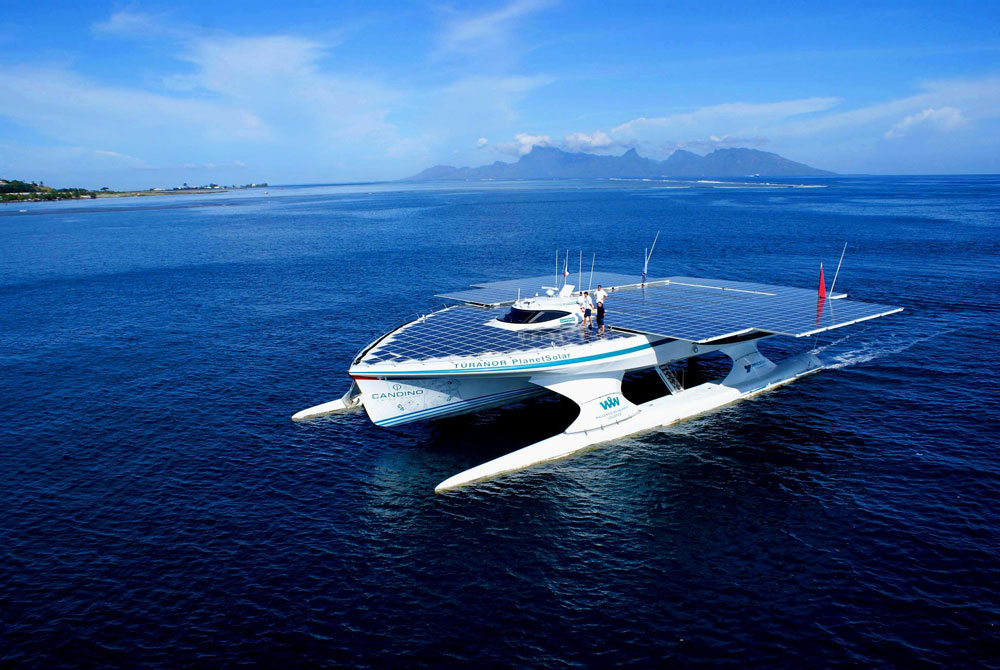Owning a boat can be an expensive proposition; not only do you have to pay an upfront cost to purchase it, but you’ll also have to spend money on maintenance and fuel charges. If you’re looking for a reliable and cost-effective way to power your boat, solar panels may be the answer.
Though solar energy has found a dynamic and established role in today’s clean energy economy, there’s a long history behind photovoltaics (PV) that brought the concept of solar energy to fruition. With the way the cost of solar has plummeted in the past decade, it’s easy to forget that going solar had a completely different meaning even just 15 years ago. Let’s go back a few centuries to the origins of solar PV and explore the history of solar energy and silicon solar technology.
When was solar energy first used?
In theory, solar energy was used by humans as early as 7th century B.C. when history tells us that humans used sunlight to light fires with magnifying glass materials. Later, in 3rd century B.C., the Greeks and Romans were known to harness solar power with mirrors to light torches for religious ceremonies. These mirrors became a normalised tool referred to as “burning mirrors.” Chinese civilization documented the use of mirrors for the same purpose later in 20 A.D.
Another early use for solar energy that is still popular today was the concept of “sunrooms” in buildings. These sunrooms used massive windows to direct sunlight into one concentrated area. Some of the iconic Roman bathhouses, typically those situated on the south-facing side of buildings, were sunrooms. Later in the 1200s A.D., ancestors to the Pueblo Native Americans known as the Anasazi situated themselves in south-facing abodes on cliffs to capture the sun’s warmth during cold winter months.
In the late 1700s and 1800s, researchers and scientists had success using sunlight to power ovens for long voyages. They also harnessed the power of the sun to produce solar-powered steamboats. Ultimately, it’s clear that even thousands of years before the era of solar panels, the concept of manipulating the power of the sun was a common practice.
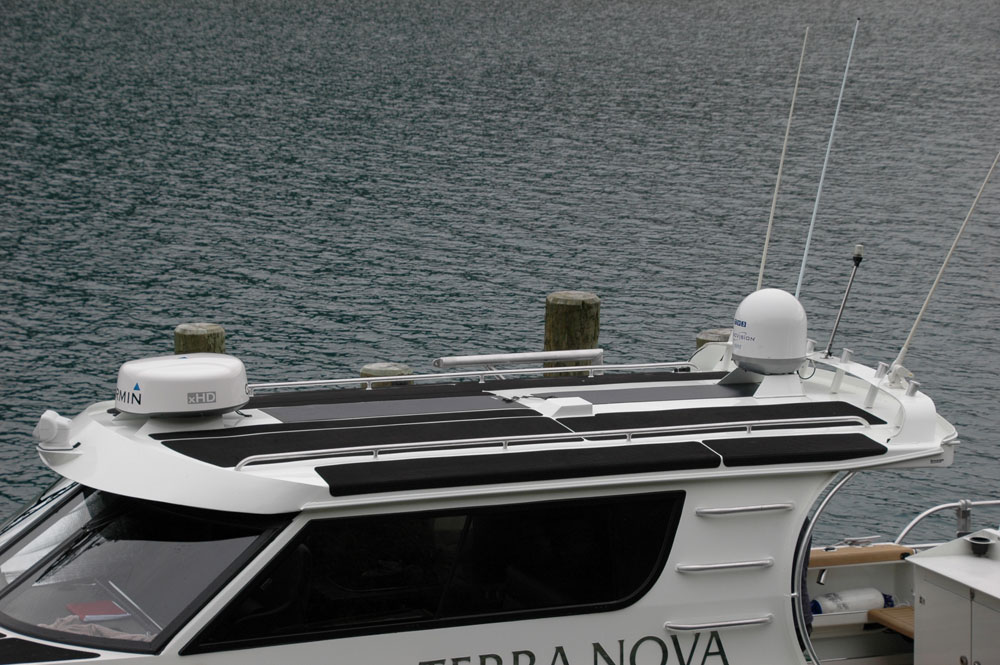
When were solar panels invented?
The development of solar panel technology was an iterative one that took a number of contributions from various scientists. Naturally, there is some debate around when exactly they were created and who should be credited for the invention. Some people credit the invention of the solar cell to French scientist Edmond Becquerel, who determined light could increase electricity generation when two metal electrodes were placed into a conducting solution. This breakthrough, defined as the “photovoltaic effect,” was influential in later PV developments with the element selenium.
In 1873, Willoughby Smith discovered that selenium had photoconductive potential, leading to William Grylls Adams’ and Richard Evans Day’s 1876 discovery that selenium creates electricity when exposed to sunlight. A few years later in 1883, Charles Fritts actually produced the first solar cells made from selenium wafers – the reason some historians credit Fritts with the actual invention of solar cells.
However, solar cells as we know them today are made with silicon, not selenium. Therefore, some consider the true invention of solar panels to be tied to Daryl Chapin, Calvin Fuller, and Gerald Pearson’s creation of the silicon photovoltaic (PV) cell at Bell Labs in 1954. Many argue that this event marks the true invention of PV technology because it was the first instance of a solar technology that could actually power an electric device for several hours of a day. The first ever silicon solar cell could convert sunlight at four percent efficiency, less than a quarter of what modern cells are capable of.
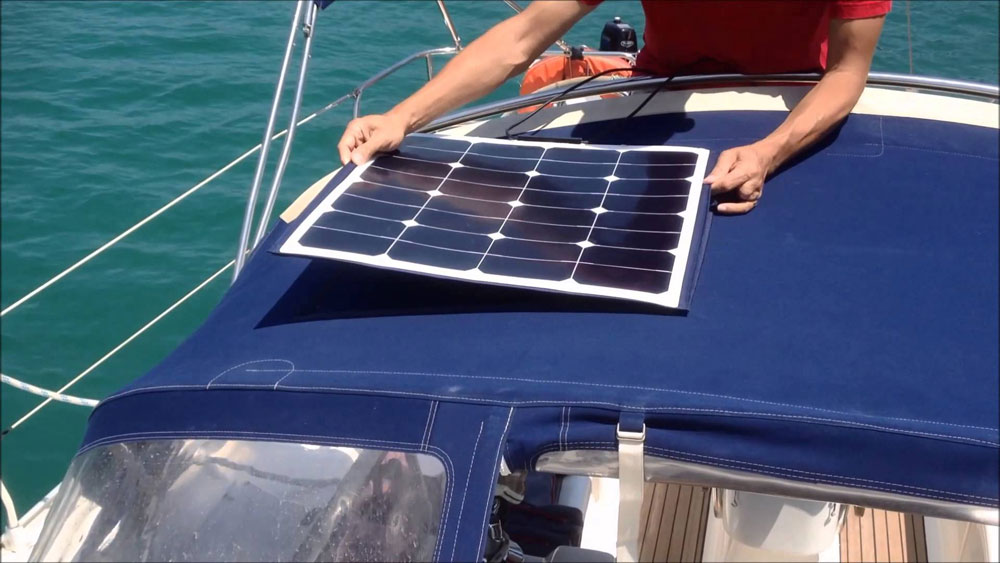
Solar Power for Boats
Owning a boat can be an expensive proposition; not only do you have to pay an upfront cost to purchase it, but you’ll also have to spend money on maintenance and fuel charges. If you’re looking for a reliable and cost-effective way to power your boat, solar panels may be the answer.
Solar energy systems on boats work similarly to other portable, off-grid systems. There are four important components to a marine solar panel system:
- Solar panels
- Charge controller
- Inverter
- Battery
When sunlight hits a boat’s solar panels, it generates an electrical current. A battery stores this current so that you can use it to support your boat’s electricity needs. Most marine solar panel systems also require charge controllers to prevent the batteries from receiving more voltage than they’re capable of handling – without charge controllers, you risk overcharging and damaging your battery.
Depending on the electrical setup of your boat and the types of appliances you need to energise, you may also need an inverter to convert direct current (DC) electricity into alternating current (AC) electricity. Some boat electronics use DC and as such do not require an inverter with a solar panel setup. However, if you use some everyday household appliances on your boat (i.e.TVs, microwaves,coffee machines or hairdryers), they likely run on AC electricity and you’ll need an inverter.
You can buy all of these components separately, but there are also solar panel kits available that include some or all of the necessary parts. Additionally, some marine solar panel kits also include the wires, cables, and mounting equipment necessary to get your boat’s solar panel system completely up and running.
If your solar panel kit does not include an inverter or charge controller, you’ll need to buy those components separately. Battery storage products occasionally have built-in inverters and/or charge controllers.
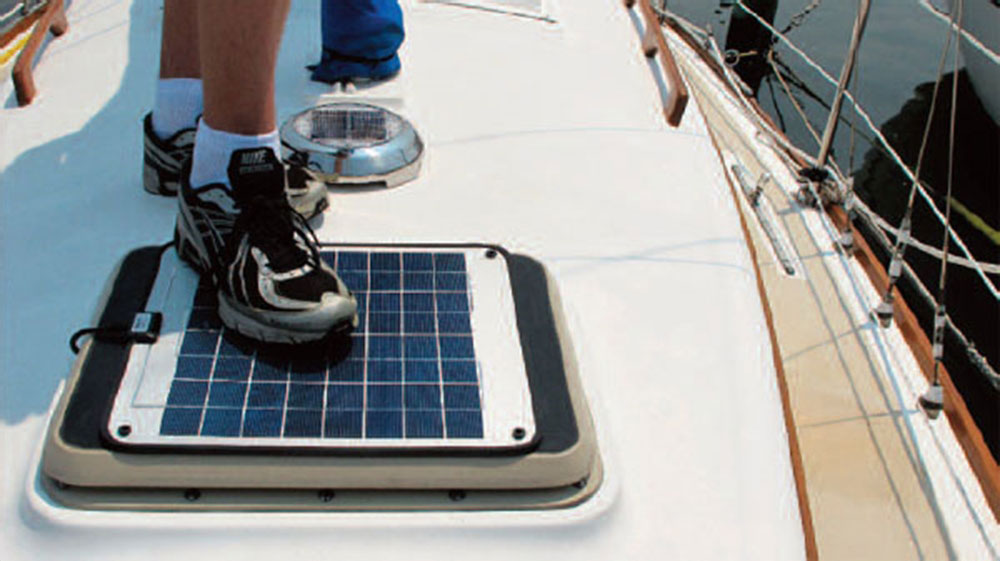
Types of solar panels
Two types of panels use either silicon crystals or thin chemical films to generate electricity.
Mono-crystalline and multi-crystalline (c-Si) panels are the oldest technology and also the most powerful. When sized correctly and matched to appropriate batteries, these are the panels to use for running large DC loads such as lights, a TV, radio or VCR. In crystalline panels, silicon, the primary material in quartz sand, is grown into crystals, refined, purified (by an expensive process), sliced into thin wafers and “doped” with the addition of chemicals.
Solar cells create electrical current, the quantity determined by the size and efficiency of the cell and the amount of light. Solar modules are created by connecting cells in parallel to increase amperage and in series to increase voltage. Typical solar modules have 30 or 36 cells (generating between 14 and 18V DC).
Amorphous thin film Silicon (a-Si) panels are only about 50% as efficient as multi-crystalline panels but can be manufactured in flexible forms so they can roll or fold, or conform to the shape of a cabin top. They are more efficient in low or diffused light conditions and are less subject to voltage drops when they heat up.
They’re the panels most often used for low amperage charging and battery maintenance. They don’t have enough output for serious energy replenishment but can be used to “float” or trickle charge a battery.
Thin film panels require lower manufacturing costs than c-Si panels like the Nature Power panels (with 45% of crystalline panel cost coming from making the raw silicon crystal structure).
Should you install solar panels on your boat?
There are numerous benefits to powering your boat with solar energy. One of the most attractive benefits of marine solar power systems is the monetary savings. You’ll need to invest money upfront to purchase solar equipment; however, once it’s up and running, you’ll be generating free electricity for your boat.
Alternatives to electrifying your boat, like gasoline-powered generators, require purchasing fuel on an ongoing basis. Switching to solar power can cut down on these purchases while protecting you against rising fuel costs.
Another benefit of marine solar panel systems is the quietness of operation. For those going out on the open water to experience nature, running a generator can be a noisy disturbance. By powering your boat with solar, you can enjoy peace and quiet without losing power.
Furthermore, you can also safely generate electricity and charge your battery with solar power while you’re away from your boat. This isn’t feasible with generators – running a generator requires manual operation and monitoring. With solar panels, you can produce usable electricity during the day and then use it for weekend boating adventures.
However, there can be obstacles to installing solar on a boat, perhaps the largest of which is available space. Ideally, your solar panels can be installed in an area with uninterrupted sunshine. Depending on the type of boat you have, this space may be easy or difficult to come by. While you likely get a lot of sun out on the water, the space it may be too small or have too many obstacles that make fitting the number of solar panels necessary to generate all of your electricity needs difficult.
When you’re looking for spots to install a marine solar panel system, consider your boat’s deck or canvas. Keep in mind that the positioning of your solar panels will also impact the type of equipment you should purchase – you may be able to use traditional monocrystalline and polycrystalline solar panels if you’re installing on a fixed, rigid section of your boat. However, if your only open space available isn’t suitable for fixed mounting, then installing lower-efficiency flexible solar panels may be a better option. Some flexible solar options have an adhesive backing so you won’t need to worry about the constraints of traditional mounting and racking materials.
It is also important to keep your panels cool. It’s not easy to keep a black surface cool in the sun, but panel output goes down as temperature rises, so if you can provide some ventilation on the backside of the panel, you may be able to pick up a 5 or 10% increase.
How many solar panels do you need for your boat?
Unsurprisingly, a power boat has very different power requirements than a sail boat. The number of solar panels you’ll need for your boat not only depends on the type and size of your boat, but also the quality of the equipment you choose, how many sun-hours the boat sees, and the amount of electricity you require. Some boats can get by with one 100-watt solar panel (or even smaller), while others require a multi-panel setup.
The first step in figuring out how many solar panels you need is to calculate your electricity load. Below are some common appliances you may be using on your boat, and what they draw for power.
How many solar panels do you need for common appliances?
| Appliance | Power Consumption (W) | Daily Hours of Use | Daily Power Consumption (WH) |
|---|---|---|---|
| Lightbulb | 60 W | 6 | 360 WH |
| TV | 200 W | 4 | 800 WH |
| Microwave | 800 W | .1 | 80 WH |
| Mini-fridge | 200 W | 24 | 4,800 WH |
| Fan | 400 W | 2 | 800 WH |
| Blige Pump | 40 W | 1 | 40 WH |
| GPS Display | 50 W | 3 | 150 WH |
The last column of the above table is the amount of energy you’ll consume in watt-hours running each appliance for the number of hours identified in column three. One 100-watt solar panel that receives direct sunlight for 5 hours will produce approximately 500 Wh of electricity (5 hours x 100 W = 500 Wh). Not taking into account conversion losses, that’s enough electricity to power a mini-fridge for 24 hours, or power a boat’s GPS display for 10 hours. Running all of the appliances above for everyday use will require multiple 100-watt solar panels or fewer higher wattage panels.
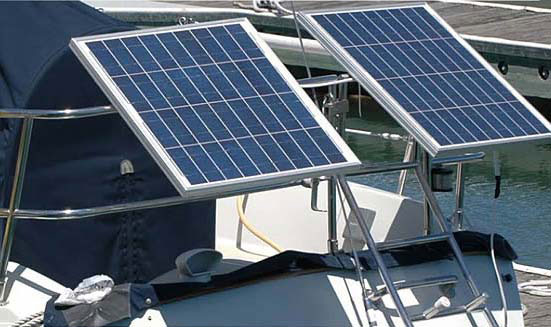

Regardless of why solar power is interesting to you, there is a robust and fascinating history behind solar’s rise to relevant status. Solar has a long list of meanings in today’s day and age. It spans various industries and contributes power to hundreds of different gadgets and technologies and boating s no different.


